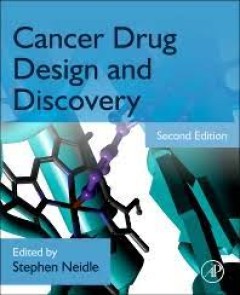Filter by

Recommendation On Fluorescent In-Situ Hybridization Panel For Myelodysplastic…
- Edition
- -
- ISBN/ISSN
- Intern 020-2024
- Collation
- x, 31 p. : ill. ; 30 cm.
- Series Title
- -
- Call Number
- BM-007
- Edition
- -
- ISBN/ISSN
- Intern 020-2024
- Collation
- x, 31 p. : ill. ; 30 cm.
- Series Title
- -
- Call Number
- BM-007

Characterization of Potential Plastic Degrading Bacterial Isolates for Lipase…
Overproduction of plastics and difficulty to degrade the plastic have become one of the major threats in the environmental sector. This plastic has been reported to accumulate in many different places. Many methods have been used to solve the problem but resulting in other harmful effects toward the environment. Methods by utilizing the enzyme from microbes can be feasible to perform withou…
- Edition
- -
- ISBN/ISSN
- -
- Collation
- -
- Series Title
- -
- Call Number
- BT 24-025

Antibody-drug conjugates : fundamentals, drug development, and clinical outco…
- Edition
- -
- ISBN/ISSN
- 9781119060680
- Collation
- xxxiv, 521 p. : ill, : ind. ; 24 cm.
- Series Title
- -
- Call Number
- 615.798 Ant
- Edition
- -
- ISBN/ISSN
- 9781119060680
- Collation
- xxxiv, 521 p. : ill, : ind. ; 24 cm.
- Series Title
- -
- Call Number
- 615.798 Ant

Characterization of Microorganisms Isolated from Bantar Gebang Landfills in B…
Polyethylene terephthalate (PET) and polyurethane (PU) are two examples of plastics that have integrated seamlessly into our daily lives. The qualities that make plastic so well-known are its low cost, light weight, and strength. However, plastics also can harm the environment when they are no longer in use because they are difficult to break down. The microbial plastic degrading method has …
- Edition
- -
- ISBN/ISSN
- -
- Collation
- -
- Series Title
- -
- Call Number
- BT 23-019

Characterization of Microorganisms Isolated from Cipayung Landfill in Depok f…
Plastics such as polyethylene terephthalate (PET) and polyurethane (PU) are utilized extensively in all sectors of life due to their versatility, durability, and low cost. However, its poor degradability has led to plastic waste accumulation worldwide, making it a major source of pollution. Recently, there has been growing interest in microbial plastic degradation as a promising strategy to …
- Edition
- -
- ISBN/ISSN
- -
- Collation
- -
- Series Title
- -
- Call Number
- BT 23-004

Cancer drug design and discovery 2nd edition
- Edition
- Second edition
- ISBN/ISSN
- 9780123965219
- Collation
- xviii, 622 p. : ill. : ind. ; 25 cm
- Series Title
- -
- Call Number
- 615.798 Can
- Edition
- Second edition
- ISBN/ISSN
- 9780123965219
- Collation
- xviii, 622 p. : ill. : ind. ; 25 cm
- Series Title
- -
- Call Number
- 615.798 Can

Molecular biology of cancer : mechanisms, targets, and therapeutics
Molecular Biology of Cancer: Mechanisms, Targets, and Therapeutics offers an accessible, engaging, and optimistic account of cancer biology for undergraduate and graduate students. Using the hallmarks of cancer as a starting point, the book looks at the cellular and molecular mechanisms underpinning the transformation of cells into cancer cells. After discussing the theory, each chapter then …
- Edition
- 4th ed.
- ISBN/ISSN
- 9780198717348
- Collation
- xviii, 375 p. : ill. : ind. ; 25 cm.
- Series Title
- -
- Call Number
- 616.994071 Pec m

IN SILICO SCREENING OF POLYETHYLENE TEREPHTHALATE HYDROLASE (PETase) INHIBITO…
Plastic waste, including polyethylene terephthalate (PET), has caused a problem to the environment because of its persistence and harmful effect. Various approach to plastic waste treatment creates more problem such as pollution and more harmful effect. Therefore, the use of the plastic degrading enzyme, including PETase (PET hydrolase), is considered a promising solution because PETase degrade…
- Edition
- -
- ISBN/ISSN
- -
- Collation
- -
- Series Title
- -
- Call Number
- BT 21-001

Polymer science and technology : plastics, rubber, blends and composites
- Edition
- 3rd edition
- ISBN/ISSN
- 9780070707047
- Collation
- xiv, 580 p. : ill. : ind. ; 25 cm.
- Series Title
- -
- Call Number
- 668.4 Gho p
- Edition
- 3rd edition
- ISBN/ISSN
- 9780070707047
- Collation
- xiv, 580 p. : ill. : ind. ; 25 cm.
- Series Title
- -
- Call Number
- 668.4 Gho p
 Computer Science, Information & General Works
Computer Science, Information & General Works  Philosophy & Psychology
Philosophy & Psychology  Religion
Religion  Social Sciences
Social Sciences  Language
Language  Pure Science
Pure Science  Applied Sciences
Applied Sciences  Art & Recreation
Art & Recreation  Literature
Literature  History & Geography
History & Geography